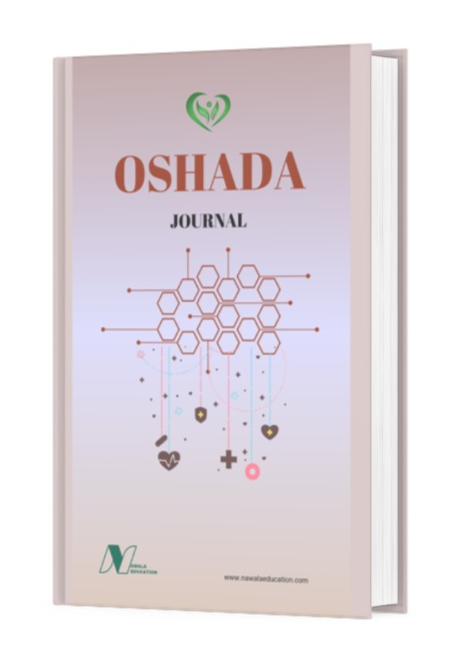Factors Affecting Nutritional Problems Of Elementary School Students
DOI:
https://doi.org/10.62872/0mcgrp80Keywords:
Problems, Nutrition, Primary School StudentsAbstract
These nutritional issues are serious problems that affect public health globally. Deficiencies in certain nutrients such as iron, vitamin A, vitamin D or folic acid can lead to various health problems. In the study of factors affecting the nutritional problems of primary school students, researchers can use various research methods to understand the relationship between the factors that contribute to the nutritional problems. Observational Studies, Case Control Studies, These studies help in identifying risk factors that contribute to nutritional problems among primary school students. Secondary Data Analysis: Researchers can also use secondary data, such as national health survey data or school data, to analyze factors related to nutritional problems among primary school students. The results in this study show that the nutritional problems of primary school students are influenced by various factors, including home environment, nutrition knowledge, diet, access to nutrition resources, and nutrition education at school. Efforts to improve students' nutritional status require a holistic approach through interventions involving parents, schools and the community as a whole.
Downloads
References
Arisman, MB. 2004. Nutrition in Life. Jakarta: EGC
Bad Reference: Black, Robert E., et al. "Maternal and child undernutrition and overweight in low-income and middle-income countries." The Lancet, vol. 382, no. 9890, 2013, pp. 427-451.
Berk, Laura E. Child Development. Pearson, 2019.
Black, R. E., Allen, L. H., Bhutta, Z. A., Caulfield, L. E., de Onis, M., Ezzati, M., ... & Rivera, J. (2008). Maternal and child undernutrition: global and regional exposures and health consequences. The lancet, 371(9608), 243-260.
Black, Robert E., et al. "Maternal and child undernutrition and overweight in low-income and middle-income countries." The Lancet, vol. 382, no. 9890, 2013, pp. 427-451.
Bucher, Charles A., et al. "Child and Adolescent Development and Behavioral Health." Essentials of Public Health Biology: A Guide for the Study of Pathophysiology, Jones & Bartlett Learning, 2018.
Caulfield, Laura E., et al. "Undernutrition as an underlying cause of child deaths associated with diarrhea, pneumonia, malaria, and measles." The American Journal of Clinical Nutrition, vol. 80, no. 1, 2004, pp. 193-198.
Jambi Provincial Health Office. "Nutrition Survey Report for Elementary School Students in 2023."
Gropper, S.S., Smith, J.L., Groff, J.L. 2016. Advanced Nutrition and Human Metabolism. Cengage Learning.
Gropper, S.S., Smith, J.L., Groff, J.L. 2016. Advanced Nutrition and Human Metabolism. Cengage Learning.
Harahap, H. T. D., Tanjung, R. D. S., & Nasution, F. 2023. The Relationship of Mother's Knowledge About Nutritional Intake in the First 1000 Days of Life with the Growth and Development of Children. Journal of Priority Nursing, 6(1), 19-28.
Ibn, Fajar. 2001. Assessment of Nutritional Status. Jakarta: EGC
Killen, Melanie, and Judith G. Smetana, editors. Handbook of Moral Development. Psychology Press, 2006.
Mahan, L.K., Raymond, J.L., Escott-Stump, S. 2016. Krause's Food & the Nutrition Care Process. Elsevier Health Sciences.
Mahan, L.K., Raymond, J.L., Escott-Stump, S. 2016. Krause's Food & the Nutrition Care Process. Elsevier Health Sciences.
Mubarak, Wahit Iqbal. 2001. Basic Human Needs.
Piaget, Jean. 2014.The Psychology of Intelligence. Routledge.
References: Anderson, James W., et al. "Health benefits of dietary fiber." Nutrition Reviews, vol. 67, no. 4, 2009, pp. 188-205.
References: Ng, Marie, et al. "Global, regional, and national prevalence of overweight and obesity in children and adults during 1980–2013: a systematic analysis for the Global Burden of Disease Study 2013." The Lancet, vol. 384, no. 9945, 2014, pp. 766-781.
References: Stevens, Gregory A., et al. "Global, regional, and national trends in haemoglobin concentration and prevalence of total and severe anaemia in children and pregnant and non-pregnant women for 1995–2011: a systematic analysis of population-representative data." The Lancet Global Health, vol. 1, no. 1, 2013, pp. e16-e25.an Jambi Provincial Statistics Center. "Jambi Province Health Statistics in 2023."
Shrimpton, R., Rokx, C., & Stunting, B. W. G. 2013. Economic impacts. In Disease Control Priorities in Developing Countries (3rd ed., Vol. 2, pp. 47-68). The International Bank for Reconstruction and Development / The World Bank.
Smolin, L.A., Grosvenor, M.B. 2017. Nutrition: Science and Applications. John Wiley & Sons.
Whitney, E.N., Rolfes, S.R. 2016. Understanding Nutrition. Cengage Learning.
Downloads
Published
Issue
Section
License
Copyright (c) 2024 Oshada Journal

This work is licensed under a Creative Commons Attribution-ShareAlike 4.0 International License.

This work is licensed under a Creative Commons Attribution-ShareAlike 4.0 International License.











